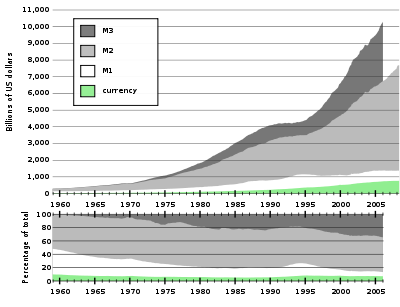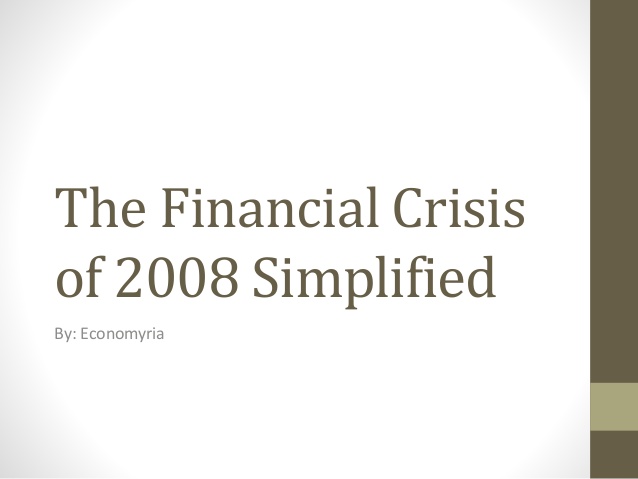Contents:

The tips prescribe that at least 18 per cent of the online financial institution credit be earmarked completely for agriculture. For international banks, the priority sector lending goal has been mounted at 32 per cent. The priority sector loans of public sector banks act as the underlying belongings for the IBPCs. Another cause why these accounts are comparatively secure is that they arrive with very low risk. That’s as a result of banks use the money from these accounts to put money into stable, quick-time period securities that come with low danger and extremely liquid together with certificates of deposit , authorities securities, and business paper. Once these investments mature, the bank splits the return with you, which is why you end up getting the next fee.

- Promulgation of the ordinance on microfinance institutions by the government of Andhra Pradesh in 2010 demonstrated their vulnerability to regulatory and legislative risks.
- The microfinance sector has witnessed two major disruptive events in the past 15 years.
- Over the years, Bandhan has raised over Rs 5,000 crore of capital through various routes such as preferential allotment and rights issue from mutual funds, foreign investors, and domestic corporates.
- Bonds issued by corporates and the Government of India can be traded within the secondary market.
Besides this, the discussion also focused on India’s ongoing efforts to achieve self reliance in medical devices and prospects of collaboration with the UAE in this regard. Panelists focused on the changing paradigms in healthcare, learnings from COVID, major provisions for the sector under the CEPA agreement, and the emerging focus areas of holistic wellness and and affordable healthcare. The group ventured to publish the first monthly journal on Insurance in India in the year 1981 which is still is the most widely read Insurance Journal in India. In the year 1988 we published Banking Finance an exclusive journal on Banking and Finance Segment.
Hybrid discussion on India-UAE Healthcare & Wellness Opportunities
A significant portion of the portfolio comprises microfinance loans to clients with modest credit risk profiles and limited access to formal credit. For instance, in the individual loan and micro and small enterprise loans, typical borrowers are vegetable vendors, small machine and lathe owners, tea shops, provision stores, small fabrication units, waste paper recycling units, tailors, and power looms. The microfinance sector has witnessed two major disruptive events in the past 15 years.
CRISIL believes Bandhan will continue to benefit from the expected growth potential in both, microfinance and affordable housing finance segments and maintain healthy growth over the medium term. Bandhan, after transitioning to a universal bank in 2015, registered a compound annual growth rate of 47.4% over the five years through March 2019, having attained a loan portfolio size of Rs 44,780 crore. Post amalgamation of Gruh, Bandhan’s loan portfolio increased to Rs 65,456 crore, an annualised increase of 81% over 12 months through December 2019. The certificate of participation is an alternative to municipal bonds in which an investor buys a share in the improvements or infrastructure the government entity intends to fund. A certificate of participation is a tax-exempt lease-financing agreement that is sold to investors as securities resembling bonds. In the last month of the financial year, the sate-run bank took on board standard loans worth Rs 7,400 crore from various banks, all of them sold with a buyback agreement.
“Overnight, the inter ibpc certificate lines would stop, the letters of credit and the bank guarantees will no longer be accepted, the refinancing of our bonds under the MTN programme would not be possible,” he explained. As per RBI guidelines, a bank must maintain a total capital adequacy ratio of at least 9% of its risk-weighted assets , including a 7% Tier I capital ratio. Further, banks are required to park 50 per cent of their shortfall in priority sector lending with Sidbi and Nabard or invest in the bonds issued by these institutions. The buyer will pay a ‘price/fee’ to the seller bank for purchasing a specified amount of PSL obligation applicable for a particular date. The Foreign banks may not have the branch infrastructure to provide agricultural credit.

The bank’s capitalisation was robust with networth of Rs 14,718 crore and tier I capital adequacy ratio (CAR ‘ excluding nine monthly profit) of 23.1% on December 31, 2019. Non-banking finance companies focusing on vehicle finance, and small finance bank applicants benefited from the high demand for priority sector lending assets. Demonetisation had a material but temporary impact on volumes between November and January 2017 as investors turned risk averse in light of the drop in collection performance of non-housing asset classes. Generally, banks which rely on corporate or wholesale credit are unable to meet the target. Ghosh said the loans have been sold for a 180-day period, but declined to specify the pricing details.
On the overall deposits front, CRISIL has noted that Bandhan had faced some withdrawals in deposits from certain State Government entities – especially post the recent moratorium announcement on a large private sector bank. However, as per management, they have quickly tapped other customer segments and the overall deposit base remains unaffected and continues to grow… In addition to having excess statutory liquidity ratio , the Bank has tied up refinance limits and also has access to the inter-bank participation certificate market due to its high priority sector eligible microfinance portfolio. Nevertheless, any material withdrawals on the deposit front will remain a key rating sensitivity factor. Mortgage-backed securities remained the largest asset class in securitisation, growing 39% and raking up transactions worth Rs 41,000 crore.
This instrument, introduced last fiscal, has substituted the complex securitisation or direct assignment structures for buying or selling priority sector loans. PSLC is being traded exclusively between banks while non-banks aren’t allowed to do so. The PSLC provides market-driven interest subsidy to those who make priority sector loans. In case NGO and other charitable institutions want to participate in financial inclusion, they may be allowed to enter and buy in this market. The Government can play role to facilitate this market by purchase of certificates or stabilizing the price of certificate or by specifying its target volume of purchase etc. The criteria suggested by the Committee for certification would simply be whether the loan is to an eligible sector, whether the interest rate follows the norms below including transparency, and whether the loan duration is greater than 180 days.
Over 200 companies, export bodies to take part in India trade fair in Dubai
Its ability to diversify and de-risk operations can protect market share in its home state against the aggressive operations of other MFIs, and will be a key monitorable. Bandhan has reported healthy asset quality metrics over the past four years, including the demonetisation period. Gross non-performing assets ratio stood at 1.93% and provision coverage ratio was 58% as on December 31, 2019.
“The biggest advantage is our https://1investing.in/ does not get reduced even after selling the PSLCs,” managing director Chandra Shekhar Ghosh said. “The introduction of PSLCs in the early part of fiscal 2017 is estimated to have had a negative impact on both securitisation and inter-bank participation certificate volumes. Given their ease of purchase and absence of risk transfer, PSLCs quickly gained currency,” Crisil said in a study.
With amalgamation of Gruh, the overall advances were at Rs 65,456 crore as on December 31, 2019. Consequently, the share of micro loans declined to 61% of total advances as on December 31, 2019, from 86% as on June 30, 2019. The acquisition of Gruh is expected to provide Bandhan with greater geographical reach and a more diversified product portfolio with reduction in share of unsecured advances. While Bandhan (pre-amalgamation) was present primarily in East and North-East India, Gruh has significant presence in rural and semi-urban areas in western India.
A company can raise money by selling shares to investors and its existing shares may be bought or bought. Intermediaries such as banks, Investment Banks, and Boutique Investment Banks can help in this course of. They can then lend cash from this pool of deposited money to those that search to borrow. The money market fund invests the capital in comparatively protected autos that mature in a short time period—usually inside 13 months.

Bonds have a hard and fast face value, which is the quantity to be returned to the investor upon maturity of the bond. 500 crore of its loans qualifying as priority sector lending to different banks wanting to meet the mandatory 40% target. The bank’s advances shrank to Rs 3.82 lakh crore in FY16 from Rs 4.11 lakh crore in FY15 and was mainly because of the reduction in the corporate book. Rego said that on the international side, he felt there was no point in doing business like buyer’s credit which was not profitable to the bank. “We we getting a spread of basis points and it did not make sense at all to do the business,” he said, adding that the bank did not stop buyer’s credit altogether.
India, UAE to sign deal to protect investments
After it commenced operations in August 2015, BFSL’s entire microfinance portfolio was transferred to Bandhan’s book. The bank is headquartered in Kolkata and offers group-based individual lending services for the microfinance business. It operates through a network of 4,220 branches, doorstep service centres , and GRUH centres, spread across 34 states and Union Territories.
CRISIL also noted a drop in absolute CASA deposits as on June 2019 in comparison to March 2019. Hence, increasing the share of CASA deposits from current levels will be integral to its profitability and will be a key monitorable in the medium term. The proportion of retail deposits (retail term deposits + CASA) stood at 76.2% of the total deposit base at the end of December 31, 2019. The bank’s retail term deposit book is granular with deposits of ticket size less than Rs 1 crore at close to 60% of the total term deposits on the same date. While microfinance borrowers are the largest constituent of the bank’s customer base, they accounted for only 5.14% of the deposit base as of December 2019. Another frequent use of the term is as a catchall for all of the markets within the financial sector, as per examples within the breakdown under.
While the bank is exploring ways and means to achieve this, the potential risk of regulatory strictures continues. Any other form of regulatory directive which impacts business operations will remain a key rating sensitivity factor. It had positively matched asset-liability maturity profile over the next 12 months as of September 30, 2019. Additionally, about 60% of the loan portfolio is parked in microfinance which are shorter tenure loans of months. This will be marginally offset by Gruh’s portfolio which comprises longer tenure assets.

After an initial period of verification, institutions should be allowed to self-certify, with periodic random monitoring to ensure adherence to criteria. Separate certificates could be issued for enforceable sub categories (e.g., agricultural credit, weaker section lending, Micro enterprises, small and marginal farmers etc), and these may carry a different price. The Raghuram Rajan Committee on Financial Sector Reforms had, inter alia, recommended introduction of “priority sector lending certificates ” to implement the priority sector lending in the country. The Committee believed that the process by which the priority sector mandates are implemented should be reformed to emphasize efficiency and ease of compliance, and once the new process is in place, the mandate should be strictly enforced. The focus should be on actually increasing access to services for the poor regardless of the channel or institution that does this—large banks may or may not be the best way to reach the poor, and while the mandate may initially force them to pay.
Short term rates on the rise
A buyer’s credit is a loan facility extended to an importer by a bank or financial institution to finance the purchase of capital goods or services and other big-ticket items. The official attributed the drop in deposits to the preference for the inter-bank participation certificates by the foreign and private banks. Bandhan has a strong brand presence, and competitive advantage of reach and local knowledge in East and North-East India in the micro loan business, which constituted 62% of its loan portfolio as of December 31, 2019. The bank’s significant presence in these regions exposes it to geographical concentration risk, inherent to the segment. As of December 31, 2019, about 40% of Bandhan’s microfinance borrower base, which is the largest loan portfolio, was in West Bengal alone.
IBPC honoured by Dubai Customs – wknd.
IBPC honoured by Dubai Customs.
Posted: Mon, 20 Dec 2021 08:00:00 GMT [source]
Bandhan’s pre-provision profitability also remains comfortable at 7.4% for the first nine months of fiscal 2020. As majority of the bank’s portfolio is priority sector lending , it has the opportunity and ability to generate income through PSL and inter-bank participation certificates . Even Gruh’s portfolio has a component of PSL eligible loans (83% of Gruh’s existing loan portfolio is PSL compliant) which would further allow Bandhan to monetise those PSL certificates, and demonstrate its high ability to generate fee income. Stocks are inherently volatile, hedge funds may be dangerous, and choices contracts can include huge losses.
- In case NGO and other charitable institutions want to participate in financial inclusion, they may be allowed to enter and buy in this market.
- Even post amalgamation with Gruh, the return on managed assets was strong at 4.7% for nine months ended December 31, 2019, compared with 3.9% for fiscal 2019.
- Rego said that on the international side, he felt there was no point in doing business like buyer’s credit which was not profitable to the bank.
- This is the idea of the so-known as technical evaluation methodology of attempting to foretell future changes.
- Bandhan’s Liquidity Coverage Ratio was healthy at 160.34% as on December 31, 2019 and the management has articulated that LCR has remained stable and strong over the last two weeks.
It is important to note that Bandhan has not faced any such significant issues thus far. Even during the demonetisation period, Bandhan maintained its collections as it was operating as a bank then and could accept old currency notes from borrowers. Since demonetization, the number of new MFIs entering West Bengal has increased in the recent past, thereby creating competitive pressure. While Bandhan’s strong footing in the region has remained largely unaltered thus far, it is consciously focused on expanding the portfolio in new geographies.
